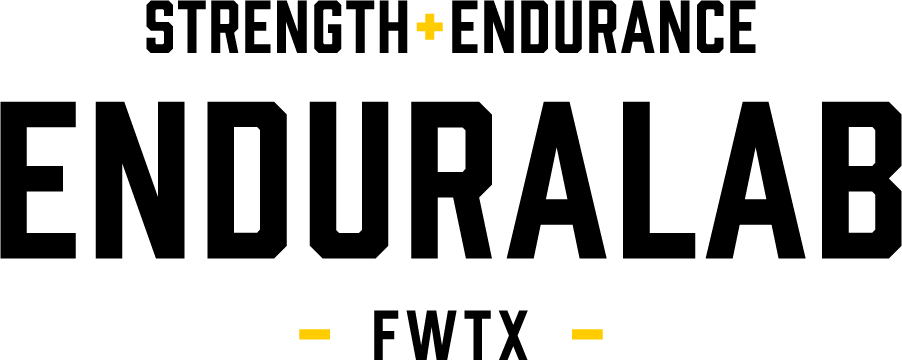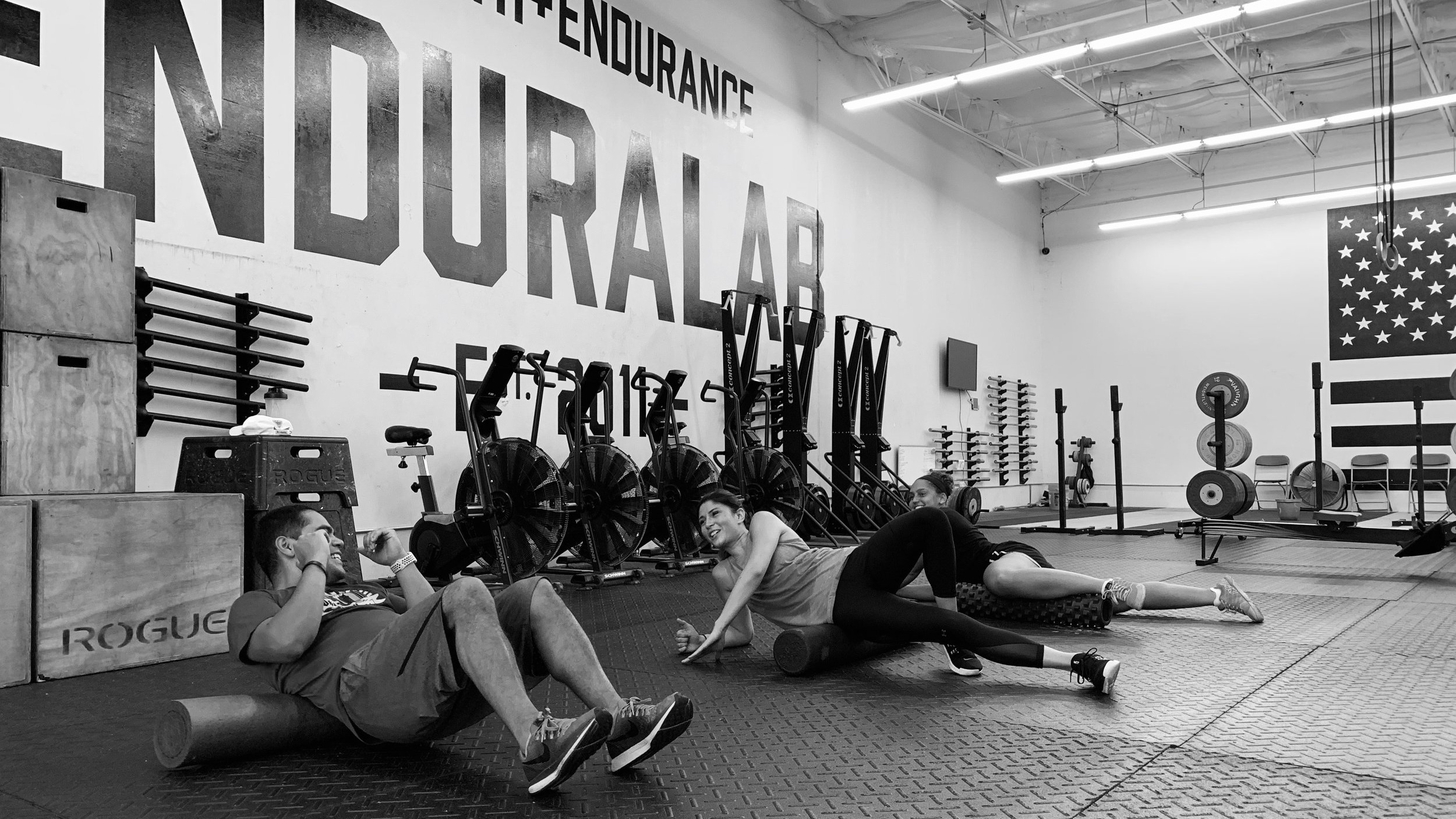
We can’t overemphasize the importance of recovery for optimal athletic performance. One simple, yet extremely effective technique is to foam roll. This affordable and easily accessible manual therapy has been used by coaches, trainers and athletes alike for years.
Foam rolling works because it is a self-myofacial release (SMR) technique. Quite simply, foam rollers let you do your own deep-tissue massage to stimulate blood flow and loosen muscle tissue using your own body weight.
BENEFITS
All pain, no gain? Think again! The benefits of foam rolling are numerous. It can improve range of motion, reduce muscle fatigue and increase short-term athletic performance. Foam rolling has also been shown to increase vertical jump height and maximize muscle force output in athletes. Other reports indicate that foam rolling can ease Fibromyalgia pain and reduce Rheumatoid arthritis pain.
BEST PRACTICES
Foam rolling is a straightforward recovery technique that can be done almost anywhere, however there are a few practical applications to ensure optimal results:
- 3-5 sets of 20-30 second repetitions optimal
- 3-5 times per week before and after each workout
- Maintain good hydration levels for peak muscle performance
“Everyone wants to add volume and/or intensity to their training plan but they never think about how to balance the scales with recovery. If you want to up your game in the gym or out on the trails, you’re going to have to up your game with nutrition, sleep and recovery practices. One of my favorite ways to sneak in recovery in a workout is to always have the foam roller handy and utilize it during breaks between sets/intervals.”
— Coach Lee
5 TYPES OF FOAM ROLLERS
When selecting the right foam roller for your body, there are a few models to consider:
- Soft-core foam roller: This type of roller is easier to compress and places less force directly on the muscle. Although it is more comfortable to new users, it may not apply enough force for extremely active and fit athletes.
- Hard-core foam roller: These rollers have an inner core made from hard plastic and an outer foam surface. They are great because they maintain their shape and provide a significant amount of pressure to the contact area of the muscle. They can, however, apply too much pressure for certain individuals.
- High-density foam rollers: These are made from specific types of dense foam that are more resistant to compression. These rollers are beneficial for those who are ready for more pressure but aren’t quite ready for a roller with a hard-inner surface.
- Textured foam rollers: The exterior has a pattern or grooves that place pressure on different parts of the tissue. Benefits are that they can promote circulation. Drawbacks are that they have been known to cause discomfort or excessive amounts of pressure in specific areas.
- Vibrating foam roller: This roller features an internal motor that vibrates at different frequencies. This type of roller benefits from reflexive action that can reduce tension in the tissue.
TECHNIQUES
While there are several notable foam rolling techniques, we have identified four of our go-to movements.
- Glutes: Sit with your butt on top of a foam roller. Bend your knees, and then cross one leg so that your ankle is over the opposite knee. Shift your weight to the side of the crossed leg, rolling over your glutes until you feel tension. Repeat with opposite side.
- Calf: While seated, place the roller under your lower leg about mid-calf. Cross the opposite leg over the top of the other to increase pressure. Place your hands at sides or just behind you, and press down to raise your hips off the floor, placing your weight against your calf muscle. Roll from below the knee to above the ankle. For extra credit, try rotating your foot clockwise and counterclockwise for a deeper stretch. Repeat on the opposite leg.
- IT Band: Lie on one side with the foam roller just in front of the hip. Cross the top leg over the lower leg and place that foot on the floor. Place as much of your weight as you can tolerate on your bottom leg. Slowly roll from the hip joint down to the knee. Repeat on the opposite leg.
- Hip Flexor: Lie on top of the foam roller with it positioned a bit under your hip. Place your forearms on the ground in front of you, supporting some of your body weight. Extend your right leg out straight behind you, with your toes pointing backwards, and your foot flat against the ground. Roll slowly back and forth, with some right-to-left movement as well. Repeat on opposite side.

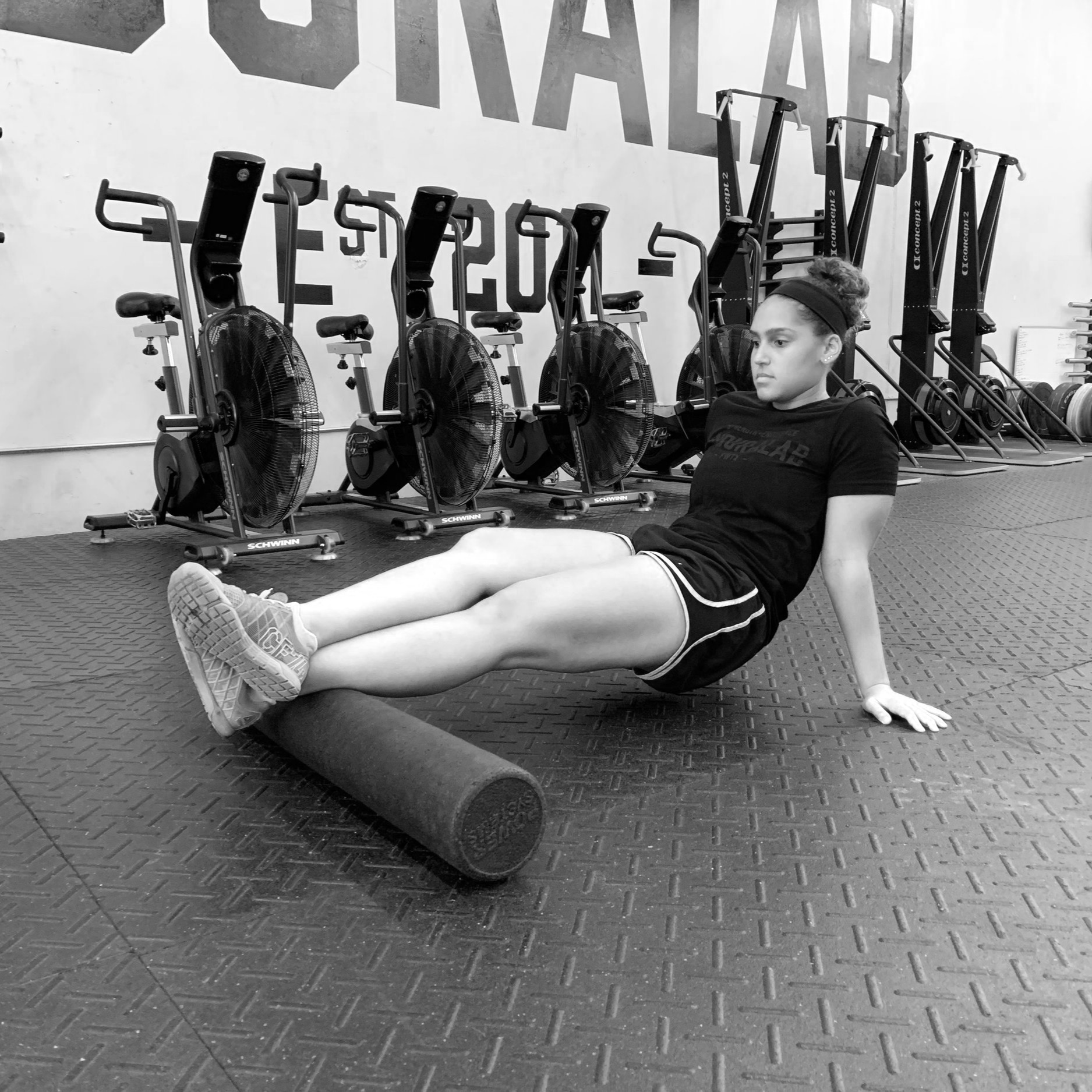
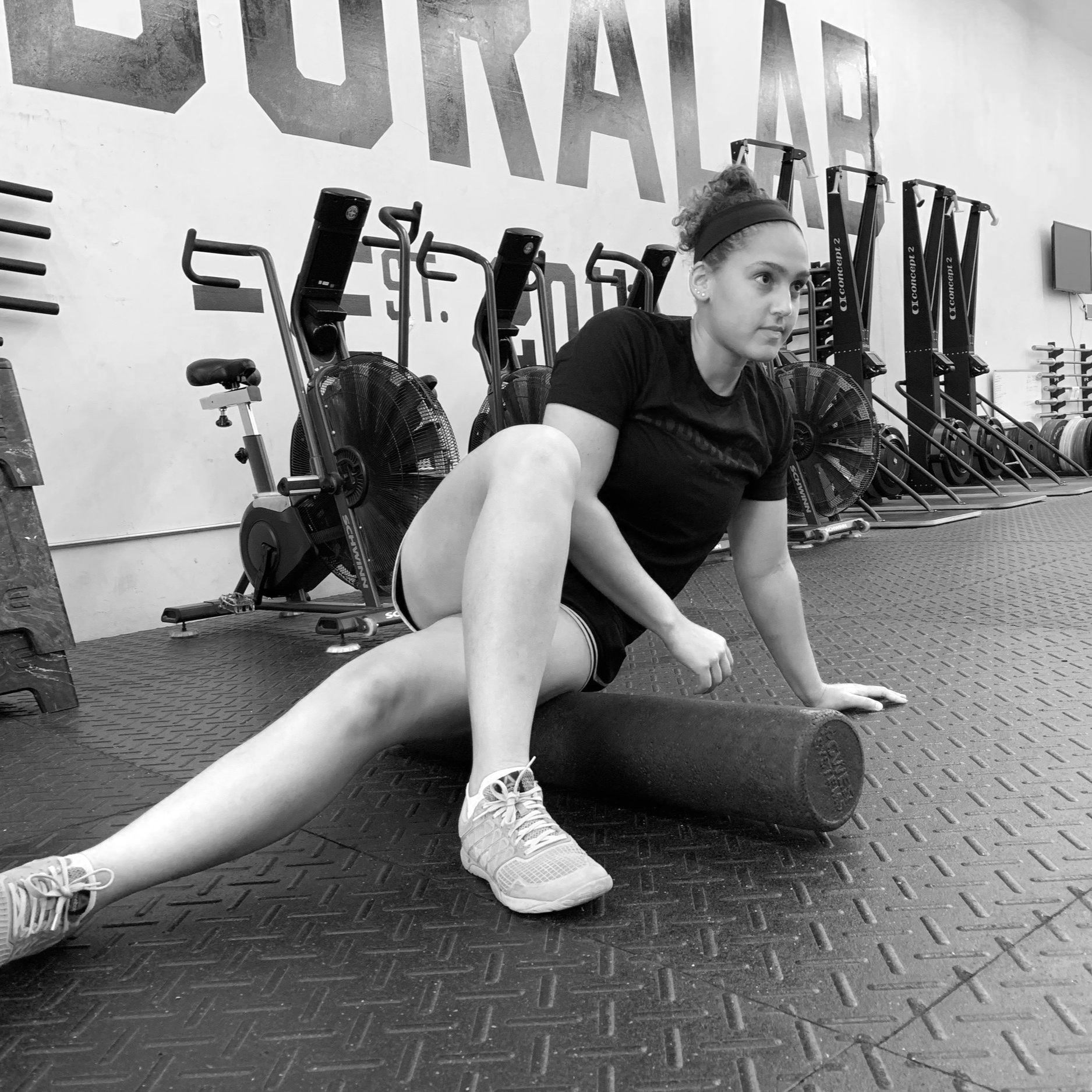
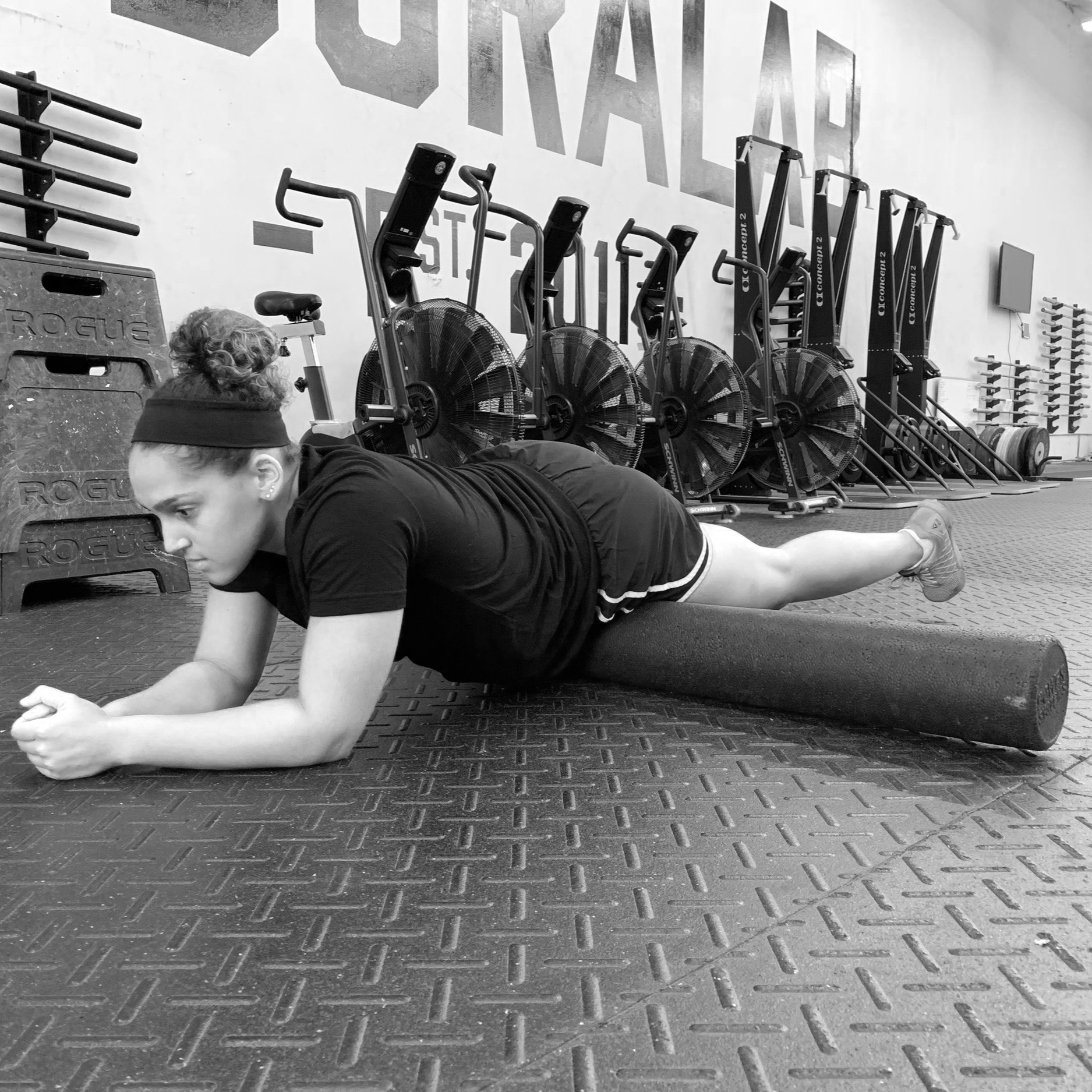
SUMMARY
Foam rolling is making great strides in increasing athletic performance through increasing range of motion, reducing soreness after a workout and helping athletes to feel less fatigued. Techniques need to be performed slowly and deliberately, with good posture and form, and on a regular basis in order to be effective. The key to remember is that practicing effective recovery techniques properly will result in lasting athletic growth. Foam roll before and after every workout and the gain will far outweigh the pain.

